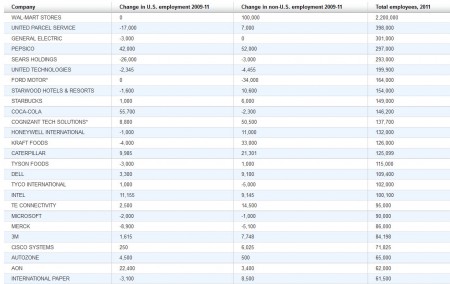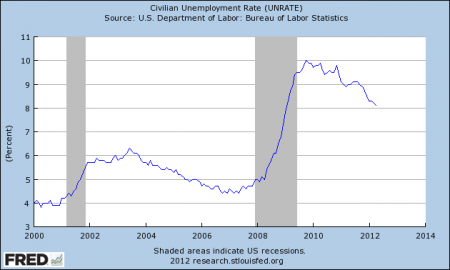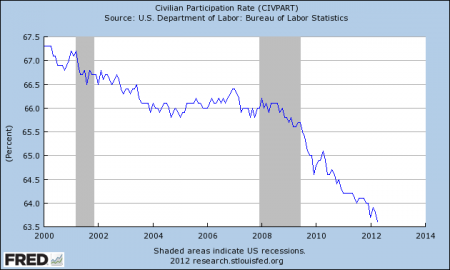Home » Economy (Page 2)
Category Archives: Economy
A debate on whether now is best time to own your first house
A nice debate.
Eric Lascelles of RBC Global Asset Management argues now is the best time to buy your first house, because interest rate is at historical low, house price has declined 34% from the 2006 peak, and owning a house has become relatively more attractive to renting in recent years.
Gary Shilling is on the other side. He predicts further fall of house price by as much as 20%, due to excessive inventory. If taking into account of the hidden inventory (people chose to hold up because the current offer is too low), and future foreclosure, he argues, the situation is even worse. He also cited Bob Shiller's research that showed in the past, when housing bubble burst, it tended to overshoot on the downside. We haven't seen that yet.
My personal view is that it's a good time to buy your first house if you really love the location, and you have no plan to move to another place, say, in the next 5 years. I would still stay away from using house as an investment.
China got a “deficit”
These days, the word "surplus" is often associated with China. China runs a huge surplus on its international trade. As a result, it also holds the world's largest foreign exchange reserves, at staggering $3.3 trillion (as of April 2012). With its fast growing economy, everything seems to run in China's favor. Not completely. As Joseph Nye Jr. explains below, China runs a soft power deficit.
China is spending billions of dollars to increase its soft power. Its aid programs to Africa and Latin America are not limited by the institutional or human rights concerns that constrain Western aid. The Chinese style emphasizes high-profile gestures, such as building stadiums. Meanwhile, the elaborately staged 2008 Beijing Olympics enhanced China's reputation abroad, and the 2010 Shanghai Expo attracted more than 70 million visitors.
China has also created several hundred Confucius Institutes around the world to teach its language and culture. The enrollment of foreign students in China increased to 240,000 last year from just 36,000 a decade ago, and China Radio International now broadcasts in English around the clock. In 2009-10, Beijing invested $8.9 billion in external publicity work, including 24-hour cable news channels.
But for all its efforts, China has had a limited return on its investment. A recent BBC poll shows that opinions of China's influence are positive in much of Africa and Latin America, but predominantly negative in the United States, everywhere in Europe, as well as in India, Japan and South Korea.
Great powers try to use culture and narrative to create soft power that promotes their national interests, but it's not an easy sell when the message is inconsistent with their domestic realities. As I told the university students, in an Information Age in which credibility is the scarcest resource, the best propaganda is not propaganda.
The 2008 Olympics was a success abroad, but shortly afterward China's domestic crackdown on human rights activists undercut its soft-power gains. The Shanghai Expo was also a great success, but it was followed by the jailing of Nobel Peace Laureate Liu Xiaobo. His empty chair at the Oslo ceremony was a powerful symbol. And for all the efforts to turn Xinhua and China Central Television into competitors for CNN and the BBC, there is little international audience for brittle propaganda.
…
Pang Zhongying, a former Chinese diplomat who teaches at Renmin University, says this reflects "a poverty of thought" in China today. When Zhang Yimou, the acclaimed director, was asked why his films were always set in the past, he replied that films about contemporary China would be "neutered by the censors."
I read the students a recent statement by Ai Weiwei, the acclaimed Chinese artist who's suffered from state harassment. He warned that censorship is undermining creativity. "It's putting this nation behind in the world's competition in the coming decades. You can't create generations just to labor at [electronics manufacturer] Foxconn. Everyone wants an iPhone but it would be impossible to design an iPhone in China because it's not a product; it's an understanding of human nature."
Jamie Dimon May 10 surprise conference call
Link to the conference call, in which you will learn more details about JPM's $2 billion loss resulted from their credit bet.
The share of world’s manufacturing
According to Data Mine, the U.S. share of global manufacturing value has been on a fairly steady decline since 2000 as Chinese manufacturing has shot up, surpassing Germany in 1999 and Japan in 2007.
The decline of US manufacturing is relative. US manufacturing, on an absolute basis, is still growing. However, this is not the case for the manufacturing employment. More than one-third of American million manufacturing jobs disappeared between 1970 and 2010, while the Chinese now enjoy a total labor force five times that in the U.S.
Combining the two facts above, one can conclude that the growth of US manufacturing has relied on shedding domestic labor (incl. shifting manufacturing to China), and increasing productivity.
Jobless recovery – the role of multinationals
WSJ research reveals that the largest U.S.-based multinational companies added jobs much faster than other U.S. employers in the past two years, but nearly three-fourths of those jobs were overseas.
Between 2009 and 2011, these multinational firms boosted their employment at home by 3.1%, or 113,000 jobs, the same rate of increase as the nation’s other employers. But they also added more than 333,000 jobs in their far-flung—and faster-growing— foreign operations.
(click for details)
The unemployment puzzle
The official unemployment rate has been dropping:
Yet, employment to population ratio shows nothing has really improved:
So what to believe? Is US labor market thawing? Or are we still in a slump?
The official unemployment rate is calculated as the number of unemployed divided by labor force. Let’s use an example to illustrate. An economy has a total labor force of 100; if 10 is unemployed, then the unemployment rate is 10/100=10%.
To understand the issue, we need to appreciate how the labor force is calculated. If 3 out of 10 people who are previously unemployed drop out of labor force, because they are discouraged by not being able to find a job for quite some time, labor force now changes from 100 to 97. And the new unemployment rate is (10-3)/(100-3)=7/97=7.2%. This represents a 2.8% improvement, although the labor market condition has not improved at all.
Is this what’s happening now in the US? If so, it will show up in labor participation rate, which is defined as the ratio between total labor force and adult population. And let’s assume the adult population is 150. When there are discouraged workers giving up and exiting the labor market, labor participation rate drops from 100/150=67% to 97/150=65%.
Not surprisingly, that is what we see in the real data:
How the Detroit Three were transformed
How the US auto-industry regained its footing during the recent financial turmoil and became competitive again with foreign auto producers. A great illustration of how Joseph Schumpeter’s “creative destruction” can revitalize a failing industry.
California Exodus
A couple of months ago, I shared a piece on the exodus of Chinese rich. Last week, WSJ had an intriguing interview with Joel Kotkin, one of the US premier demographers, on why Californians have been moving out the state for the past twenty years.
California used to be a far-out paradise for hipsters who had grown up listening to the Mamas & the Papas' iconic "California Dreamin'" and the Beach Boys' "California Girls." But it also attracted young, ambitious people "who had a lot of dreams, wanted to build big companies." Think Intel, Apple and Hewlett-Packard. "California is God's best moment," says Joel Kotkin. "It's the best place in the world to live." Or at least it used to be.
However, according to Mr. Kotkin, nearly four million more people have left the Golden State in the last two decades than have come from other states. This is a sharp reversal from the 1980s, when 100,000 more Americans were settling in California each year than were leaving… most of those leaving are between the ages of 5 and 14 or 34 to 45. In other words, young families.
Kotkin blamed government and the red tape. "The first thing that comes to many American minds when you mention California isn't Hollywood or tanned girls on a beach, but Greece", says Mr. Kotkin, "Many progressives in California take that as a compliment since Greeks are ostensibly happier".
The other factor is high taxes. According to the Tax Foundation, California has the 48th-worst business tax climate. Its income tax is steeply progressive. Millionaires pay a top rate of 10.3%, the third-highest in the country. But middle-class workers—those who earn more than $48,000—pay a top rate of 9.3%, which is higher than what millionaires pay in 47 states.
"Basically, if you don't own a piece of Facebook or Google and you haven't robbed a bank and don't have rich parents, then your chances of being able to buy a house or raise a family in the Bay Area or in most of coastal California is pretty weak," says Mr. Kotkin.
While many middle-class families have moved inland, those regions don't have the same allure or amenities as the coast. People might as well move to Nevada or Texas, where housing and everything else is cheaper and there's no income tax.
Call it the Great Exodus of California. This is very unfortunate.






